Empress
Patent/design registration not found
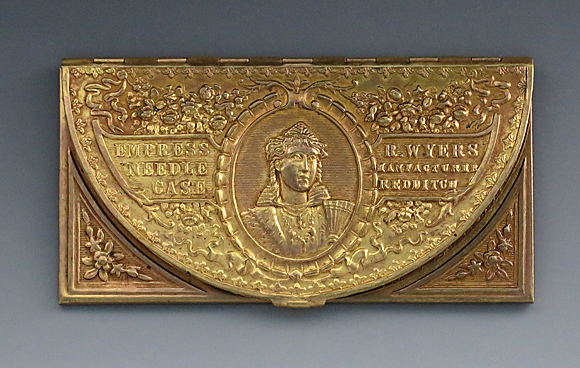
Needle Case
Design Details
Needle Case Type: |
Flat-Names |
Patent/Registered to: |
Unknown |
Patent/Design Representation #: |
Unknown |
Patent/Design Registration Date: |
Unknown |
Location of Patent/Design Registration: |
Unknown |
Reference #: |
Unknown |
Dimensions: |
8.1 x 4.3 |
Material: |
Brass |
Name Variations: |
Richard Wyers |
Other Variations: |
a) Plain back
b) Back with additional wording |
Additional Photographs
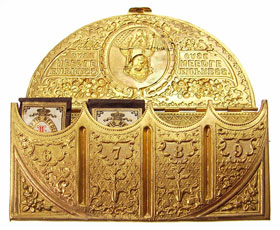
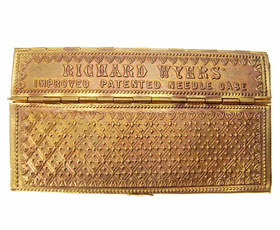
Front open and back views (photos courtesy of Bunny's Place)
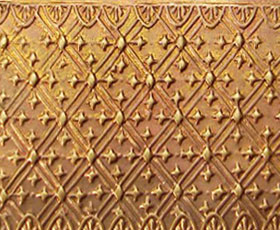
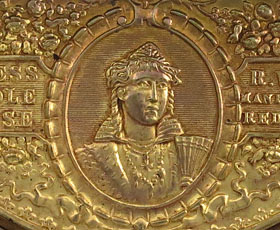
Plain back detail (photo courtesy of Bunny's Place) and front detail
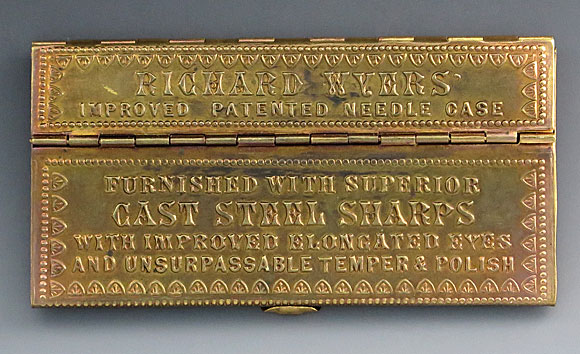
Back with additional wording
RICHARD WYERS
IMPROVED PATENTED NEEDLE CASE
FURNIISHED WITH SUPERIOR
CAST STEEL SHARPS
WITH IMPROVED ELONGATED EYES
AND UNSURUPASSALBE TEMPERA POLISH
A special thank you goes to Robert Bleasdale for selling this needle case. Twice each year his company, Bleasdale Ltd., has a sewing tool auction, once in the
summer and again in the winter, where many wonderful needle work tools are sold, several which were purchased by the author of this website. Be sure and check out their website
at Bleasdale Ltd.
Facts
An empress is the title of either a female imperial monarch or the wife or mother of a male imperial monarch or emperor. An empire can be
made up of a number of kingdoms each with a king but with the emperor having overall rule. Queen Victoria and some of her successors although
using the title of Empress/Emperor of India were monarchs ruling large kingdoms. The title was considered justified because of the Crown
succeeding the former Mugal Emperor who ruled over hundreds of princely states.
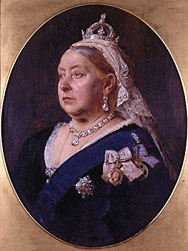
History
The British East India Company, a private company formed to establish trade with the East Indies, had from 1757, using private armies, gradually
established rule over substantial portions of India. After the sepoy Indian Rebellion of 1857, the Government of India Act was passed in
Britain passing direct administrative control to the British Crown thus commencing the period of the British Raj. The Royal Titles Act was
passed in 1876 which enabled Queen Victoria to add the title Empress of India to her title on 1st May 1876. This Act was ushered through the
Parliament by Prime Minister Benjamin Disraeli supposedly to remedy the Queens displeasure at the prospect of her daughter Victoria who was married
to the reigning German Emperor, having a higher title than her own. George VI was the last Emperor of India and his wife Queen Elizabeth, the
Queen Mother, the last Empress since the title was relinquished when India was granted independence in 1947.
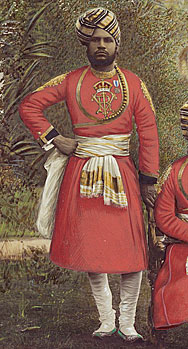
Miscellaneous
Queen Victoria displayed a keen interest in her Indian territories and expressed interest in having some Indian servants to serve table at her
Golden Jubilee celebrations. Two men were duly selected and dispatched to Windsor Castle arriving in 1887. One of these, a young Indian
Muslim named Mohammed Abdul Karim, greatly impressed the Queen and he quickly rose through the ranks being given the position of Munshi or teacher
as the Queen endeavoured to learn Urdu. He was later appointed Indian Secretary to Queen Victoria. This rapid rise and her expectation that
he should be treated as an equal to the Royal Household created much disquiet. Their close plutonic relationship with the Queen defending him
against all complaints, and her insistence that he should travel with her on many trips, did little to reduce the tension and mistrust. It has
even been speculated that she might have found some amusement in the situations created. He was certainly a “favourite” of the Queen and she
rewarded him with honours and arranged for property in India on his return sensing that he would not fare well after she was no longer there to be
his protector.
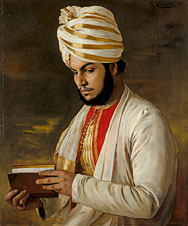
Note: Right side panel text and photos provided by Lynda Herrod.













